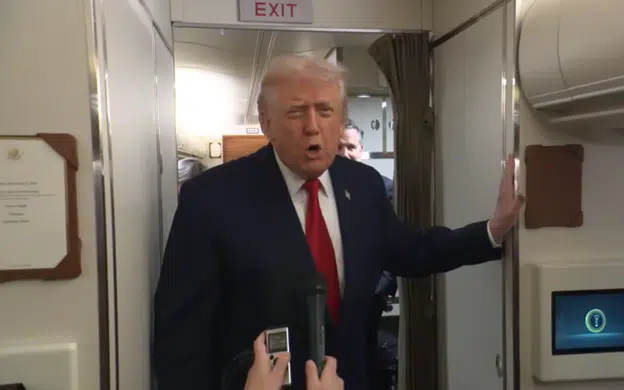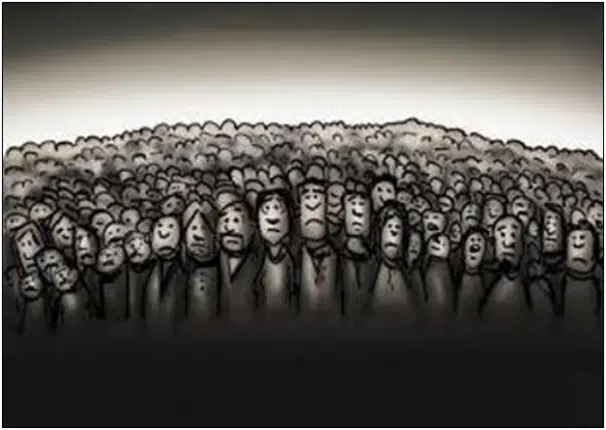 By Howard Rich — Last month’s U.S. Supreme Court decision upholding “Obamacare” and its insidious individual mandate brought home the reality of government-run health care for many Americans. Yet while the expanded taxing authority granted to the federal government under Justice John Roberts’ ruling is indeed unprecedented, “Obamacare” itself is merely the latest in a long line of socialized medicine expansions – the reach (and cost) of which continue to wreak havoc on our economy.
By Howard Rich — Last month’s U.S. Supreme Court decision upholding “Obamacare” and its insidious individual mandate brought home the reality of government-run health care for many Americans. Yet while the expanded taxing authority granted to the federal government under Justice John Roberts’ ruling is indeed unprecedented, “Obamacare” itself is merely the latest in a long line of socialized medicine expansions – the reach (and cost) of which continue to wreak havoc on our economy.
Perpetuating the unsustainable expansion of our nation’s “dependence economy” is just one component of Barack Obama’s socialized medicine agenda, though. Another component is expanded regulation of our health care industry – which directly impacts the hospitals we visit, the doctors who treat us and the medicines prescribed to us.
This regulation invariably produces lower quality health care and higher prices – despite government’s protestations to the contrary. Earlier this year, for example, U.S. Food and Drug Administration (FDA) commissioner Margaret Hamburg boasted that her agency had prevented “128 drug shortages” over a six-month period while at the same time reducing the number of new shortages by 53 percent.
“This data is a testament to how (the) FDA exercises flexibility and discretion in much of our work on drug shortages,” Hamburg noted, praising her bureaucracy before shifting the onus for drug supply problems exclusively onto the shoulders of the private sector.
“Drug manufacturers in particular have a responsibility to manufacture quality drugs and to have a process to ensure supply continuity of critical drugs,” she wrote.
What Hamburg neglected to mention was the starring role her agency played in creating those drug shortages in the first place – an “orgy of enforcement” that deliberately ignored targeted solutions in favor of shutting down or severely curtailing the production of numerous life-saving medicines.
Investigators working for U.S. Rep. Darrell Issa’s Committee on Oversight and Government Reform recently uncovered the scope of the FDA’s overreach. According to Issa’s committee, between 2009 and 2010 the total number of warning letters churned out by FDA bureaucrats to drug manufacturers increased by 42 percent. Between 2010 and 2011, these warning letters increased by an additional 156 percent.
Obviously it didn’t take long for the impact of this regulatory excess to be felt in the marketplace. Of the 219 drugs listed on the American Society of Health System Pharmacists (ASHSP) shortage list as of this February, Issa’s committee found that 58 percent of them were “produced by at least one facility undergoing FDA remediation.”
“It is clear that over the past three years the FDA has failed to protect adequate drug supply,” the committee’s report concluded.
Supply problems created by expanded FDA enforcement have exacerbated a pre-existing regulatory condition – price controls imposed on generic drugs as a result of the 2003 Medicare Modernization Act (which created the prescription drug entitlement for Medicare beneficiaries). As a result of all these regulations and market distortions, drugs that are critical to treating cancer, high blood pressure and leukemia are now in short supply – as is a common surgical anesthetic.
Ironic, isn’t it? In the name of protecting consumers the FDA has actually put their lives in jeopardy – creating shortages that never would have come about had the free market been permitted to operate independent of such interference.
“It makes absolutely no sense that we should have shortages of critical, life-saving drugs because of regulatory paranoia,” writes Avik Roy, a senior fellow at the Manhattan Institute for Policy Research. “Surely there is a way for the FDA to take a more balanced approach to this problem.”
There is a way. Congress could dramatically scale back the FDA’s enforcement authority – while at the same time removing price controls. Unfortunately, the only remedy being endorsed by the Obama administration is legislation that would require already over-burdened drug manufacturers to warn the FDA of impending shortages – a “solution” that utterly fails to address the root causes of this problem.
In fact according to National Review, this new regulation would result in drug manufacturers being “dragged before Congress for failure to predict a shortage,” which in turn “could prompt some to leave the market.”
When government first began regulating pharmaceuticals in 1938, the FDA had 180 days to notify a company that its application for a new drug had been revoked otherwise the company was free to move forward with production. In 1962, this authority was expanded so as to require affirmative approval from the FDA prior to manufacture. Today the FDA has sweeping control over virtually every aspect of pharmaceutical production – inhibiting innovation and, in the words of Michael Cannon of The Cato Institute, harming patients “by withholding products that would protect them from illness or death.”
Once again, government intervention is exacerbating a problem that it claims to be solving – with tragic and costly consequences for the American public and the free market economy.
The author is chairman of Americans for Limited Government.






